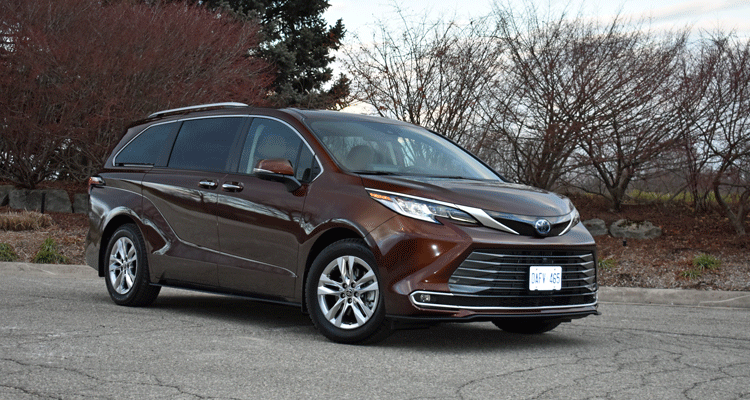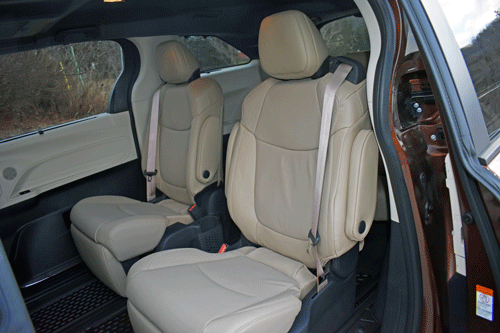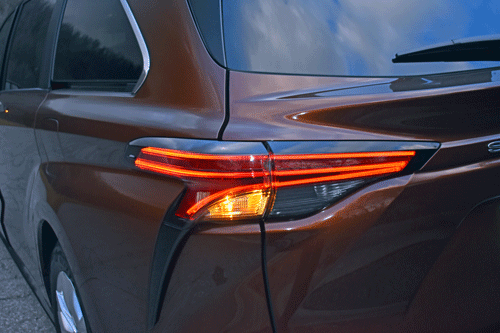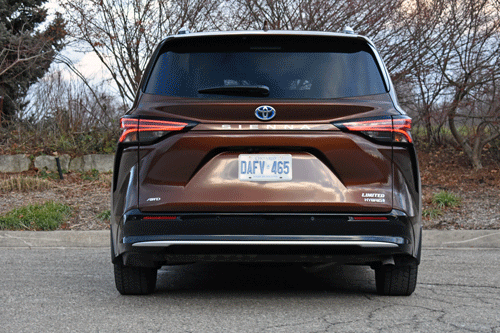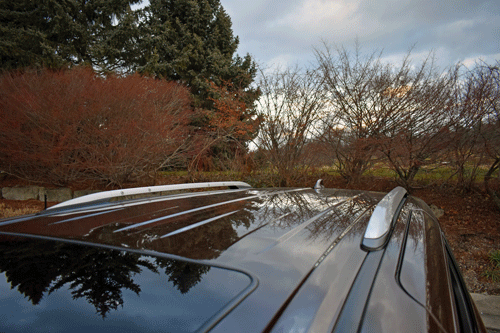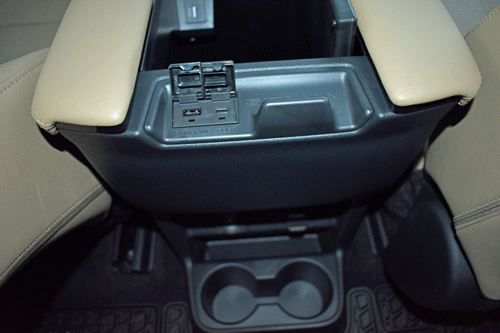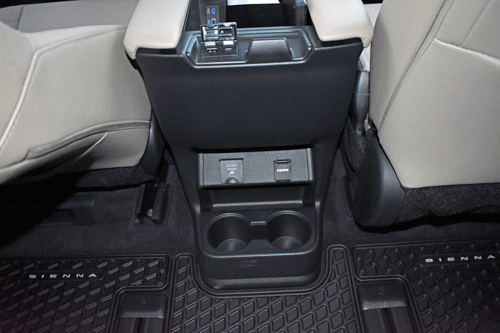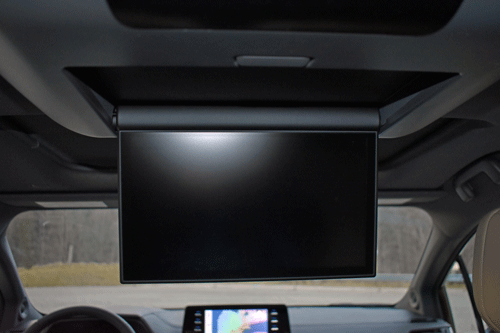Contrary to popular belief, Chrysler did not invent the minivan. True, the Dodge Caravan and Plymouth Voyager, launched in the early 1990s, dominated that market segment for decades.
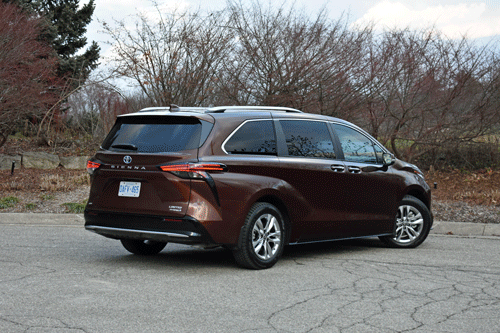
But the first minivan that had any degree of success was probably the VW “Kombi”, which reached our shores in 1950. In North America though, it was more or less a niche vehicle.
And even the “Cara/Voy” (and the later Chrysler Town and Country) were beaten to our market by the first Toyota van to arrive here, perfectly and succinctly named the Toyota Van LE.
Why it wasn’t marketed in Québec as “Toyota Le Van” is anybody’s guess. Or maybe why I never went into automobile marketing.

That was one weird vehicle, with the engine mounted amidships, supposedly to improve handling. As if track-worthy performance was top of mind amongst minivan prospects.
Subsequent Toyota minivan generations, dubbed Sienna, became much more normal, and much more successful. Which leads us to today’s subject, the 2024 Toyota Sienna Limited Hybrid. Actually, “Hybrid” is redundant, because all Siennas are hybrids now.
If your Sienna happens to catch fire, would that make it a “burnt Sienna”? Sorry; too much time spent with Crayola crayons as a kid.
Exterior: Styling-wise, well, it’s a minivan. Box on wheels. But practicality is the watchword here, not some stylist’s flight of fancy.
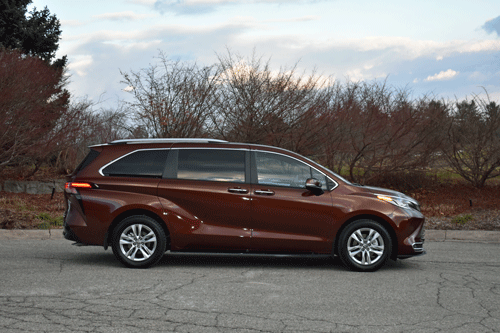
Proper amber turn signals front and rear. Nice detailing here and there.
The paint colour on my tester was “Sunset Bronze Mica”. You and I would say “brown”. I rather liked it; several on-lookers vehemently disagreed. There are lots of other choices.
Interior: Heading home from Handel’s Messiah at Toronto’s Koerner Hall just before Christmas, we had six adults in the three-row Sienna, and everyone complimented the van on ingress, egress, space, and seat comfort, even in that third row. There are no basketball stars in my family, but still…
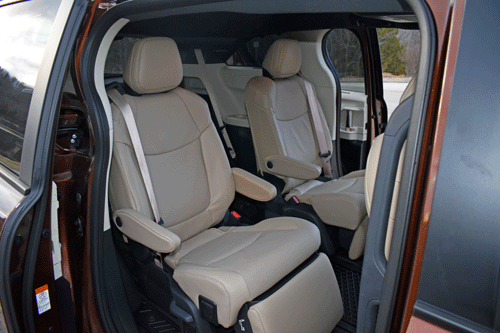
Seats for seven in this model, with pairs of buckets in the front and middle rows, and a three-seater in the third. Lower Sienna trim levels have a three-seat middle bench if that extra seat is important to you.
The middle buckets are multiply adjustable (fore-and-aft and rake), and have deployable leg rests that can turn them into lounge chairs.
They can be slid forward to allow varying amounts of leg room between those two rear rows of occupants, and to ease access to the third row, which is not the “Olympic-level gymnastics” trick that these things often are. The third row seats aren’t quite Business Class, but easily surpass the “beats walking home in the rain” criterion.

Both middle and rear rows can be folded to create a truly vast storage area. It requires learning the sequence of straps you need to pull and in which order to make this happen, but you eventually figure it out.
The upholstery is rich-looking leather. Cloth is always better in every way, but I’ve whined about that before, so moving on…
And let’s hear it again for seat heaters.
The leather’s colour is listed as “Chateau”. Are French country houses always painted “off-white”? Given that kids who are frequent occupants of minivans tend to generate lots of sticky stuff, perhaps a different colour would be more appropriate, because this upholstery would rapidly become more “off” than “white”.

Government regulations require head rests in the second and third rows, even if about 90% of the time nobody is sitting there, or those who are usually are so short they don’t need them. In that case, all the head rests do is block the driver’s view to the rear. Cleverly, in Sienna they can easily be folded down.
Sienna offers the “kick to open” feature for the rear hatch. No no, you don’t actually kick the hatch, you wiggle your foot under the bumper and up she goes. Kick again, and it re-closes. Makes it much easier when you’re carrying stuff. There are various safeguards built in – van must be in Park or shut off entirely – to ensure this can only be done at no risk to other riders or passers-by. Sometimes in my tester the kick didn’t work, or the hatch only came down half-way. Again, more familiarity would surely help.

The instrumentation is generally clear and logical, and the minor controls reasonably easy to decipher. I was not able to figure out how to keep the instrument lighting on “full bright”; every time I went under an overpass, it would switch to a “night” setting, even in broad daylight. Presumably, this is to automatically dim the lighting at night and save you from the onerous task of doing that yourself. But since you have the full headlights on all the time even if the car companies haven’t figured that out yet, it’s just annoying. (You do have full lights on all the time, yes?)
I’ve also ranted before about the idiotic failure of car companies to automatically switch the lights off when you switch the car off, so once again, moving on…

The aforementioned kids seem to take a never-ending amount of gear with them. Sienna has this covered with a multiplicity of cubby bins, cup holders, and oddment storage spaces. A huge open tray under the centre console between the front seats has ridges on the sides to keep stuff from sliding out.
There’s also a movie screen deployable from the roof over the middle row, so the kiddies can watch shows on the go. My kids are well past that age, so I didn’t even try to figure this feature out.
We’re also past the point where we’d need the spy mirror that gives parents a wide-angle view of whatever may be going on behind them. If your family is still in kiddie mode, this would be nice to have.
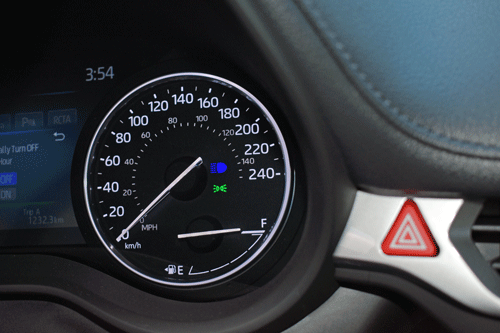
The big round gauge on the left of the instrument cluster is usually a tachometer, which in almost any automatic vehicle is pointless anyway. Here, it’s a gauge showing what proportion of the Sienna’s motivation is coming from the engine, and which from the electric motors. Again, not that you really need to know this.
The build quality and materials are excellent, as you’d expect from Toyota. As is the interior colour matching, which has not always been a Toyota strength.
Powertrain: Mechanically, Sienna has a transversely-mounted 2.5 litre double overhead camshaft direct injection 16-valve four cylinder running on the Atkinson cycle, bolted to something Toyota calls an eCVT (“electronically-controlled Continuously Variable Transmission”). Unlike other CVTs, this is essentially a planetary gearbox.
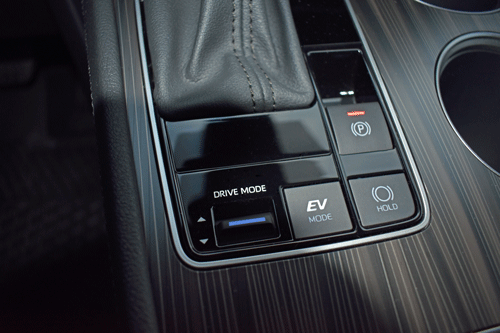
The hybrid part reminds me of the old saying, “Any sufficiently advanced technology is indistinguishable from magic.” Suffice it to say that three motor-generators (MG1 and MG2, just like Formula One cars, plus MGR to drive the rear wheels) and the batteries deliver urge into what is effectively an “on-demand four-wheel drive” system. It operates nominally in front-drive, but power is sent to the rears in whatever proportion the computer decides is appropriate in that instant.
A switch allows you to choose “Normal”, “Sport” or “ECO” drive modes, the latter two presumably providing sharper or less-sharp throttle response respectively. As usual with these things, the perceived differences are minimal.
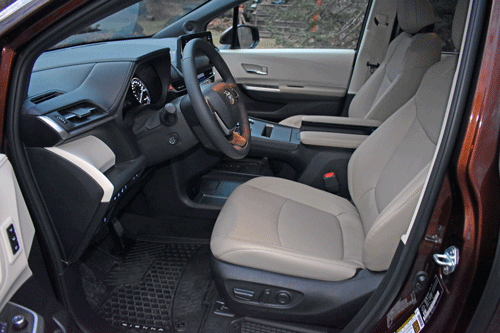
The shift quadrant has a “manual” option – pull the lever to the left, and swap gears yourself. They get the manual shift direction wrong – it should be back to upshift and forward to down shift. Why is this wrong? Think about your body’s weight transfer as you accelerate and decelerate. But why you’d want to do that in a minivan is anybody’s guess. You’re hardly taking this vehicle onto a racetrack where that last hundredth of a second is critical.
One of the most important parts of any “electrified” powertrain, and a major part of its efficiency advantage, is regenerative braking. Touch the pedal and the “motors” turn into “generators”. The electrical drag slows the van down, and also recharges the batteries.
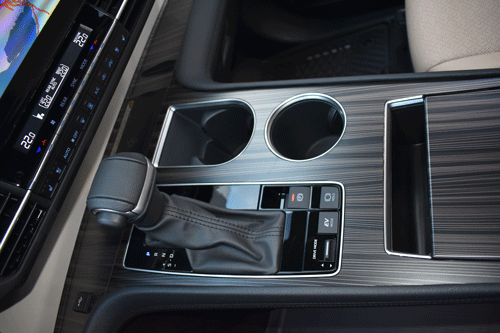
Drive: When you first switch Sienna on, it’s an electric vehicle. By the time I got to the end of my driveway, the engine fired up. You are supposed to get “up to” 50 km on the battery. I guess 50 metres is “up to” 50 km, just not very “close up” to it.
Mind you, it was cold – mid-December – and batteries do not like cold weather.
The engine/motors combo delivers more-than-adequate acceleration, and responds well to the throttle/actuator.
Occasionally you can feel a slight surge in acceleration when it’s running on the motors and the engine kicks in, but it’s generally seamless.
Ride quality is surprisingly good, even with winter tires (235/60R18 Bridgestone Blizzaks). Winter tires usually create a rougher, noisier ride, but not here.

With four-wheel drive and the Blizzaks, if you get stuck in the snow in this thing, maybe it’s time to surrender your driver’s licence.
Handling is all you could expect or want in a minivan. The steering has nice weight, linear response, and decent feel.
All the nanny systems (lane change warning, etc.) are present and accounted for; as usual, I switched them all off at the first opportunity.
Except of course for the bright and clear back-up camera. These things show you a view you can’t otherwise see. The camera lens in Sienna does get dirty quickly though. Why doesn’t everybody copy VW and hide this behind the rear deck badge?
The Sienna looks like a big vehicle. No lie; it is. But when you drive it, it seems to shrink around you, making it easier to drive, especially when parking – backing in, of course.
When I picked up the Sienna, it was showing something like 900 km of range. Driving it for a week, the fuel gauge needle barely moved. I don’t attempt to record actual fuel consumption because weather and driving conditions vary so much that vehicle-to-vehicle comparisons are essentially meaningless. Suffice it to say that this seems to be a remarkably efficient vehicle.
Conclusion: Minivans will never again reach the sales heights they achieved in the past. They just make too much sense for too many families, and we know “making sense” has very little to do with the car biz.
But if you’ve got a family, or any reason to take lots of people somewhere, and you have a mind of your own, check out the Toyota Sienna.
2024 Toyota Sienna Hybrid
Price as tested: MSRP $66,434.58 (CAD)
Configuration: transverse front-engine, front-wheel drive with automatic on-demand four-wheel drive
Engine: 2.5 litre Atkinson cycle inline four, DOHC, 16 valves, with three electric motors
Transmission: electronic CVT
Power: “Net” – 245 hp (183 kW). Engine – 189 hp (141 kW) @ 6,000 rpm; front motor – 180 hp (134 kW); rear motor – 54 hp (40 kW).
Torque: Engine – 176 lb-ft (239 Nm) @ 4,400 rpm; front motor – 199 lb-ft (270 Nm); rear motor 89 lb-ft (121 Nm).
Fuel consumption (litres per 100 km): 6.8 City, 6.6 Highway, 6.7 Combined
Warranty: Basic – 3 years/60,000 km; powertrain – 5 years/100,000 km; corrosion
Perforation – 5 years/unlimited km; emissions – 8 years/130,000 km; hybrid components – 8 years/ 160,000 km; electric traction battery to 70% of original capacity – 8 years/160,000 km, no deductible, no transfer fee
Website: Toyota Canada



